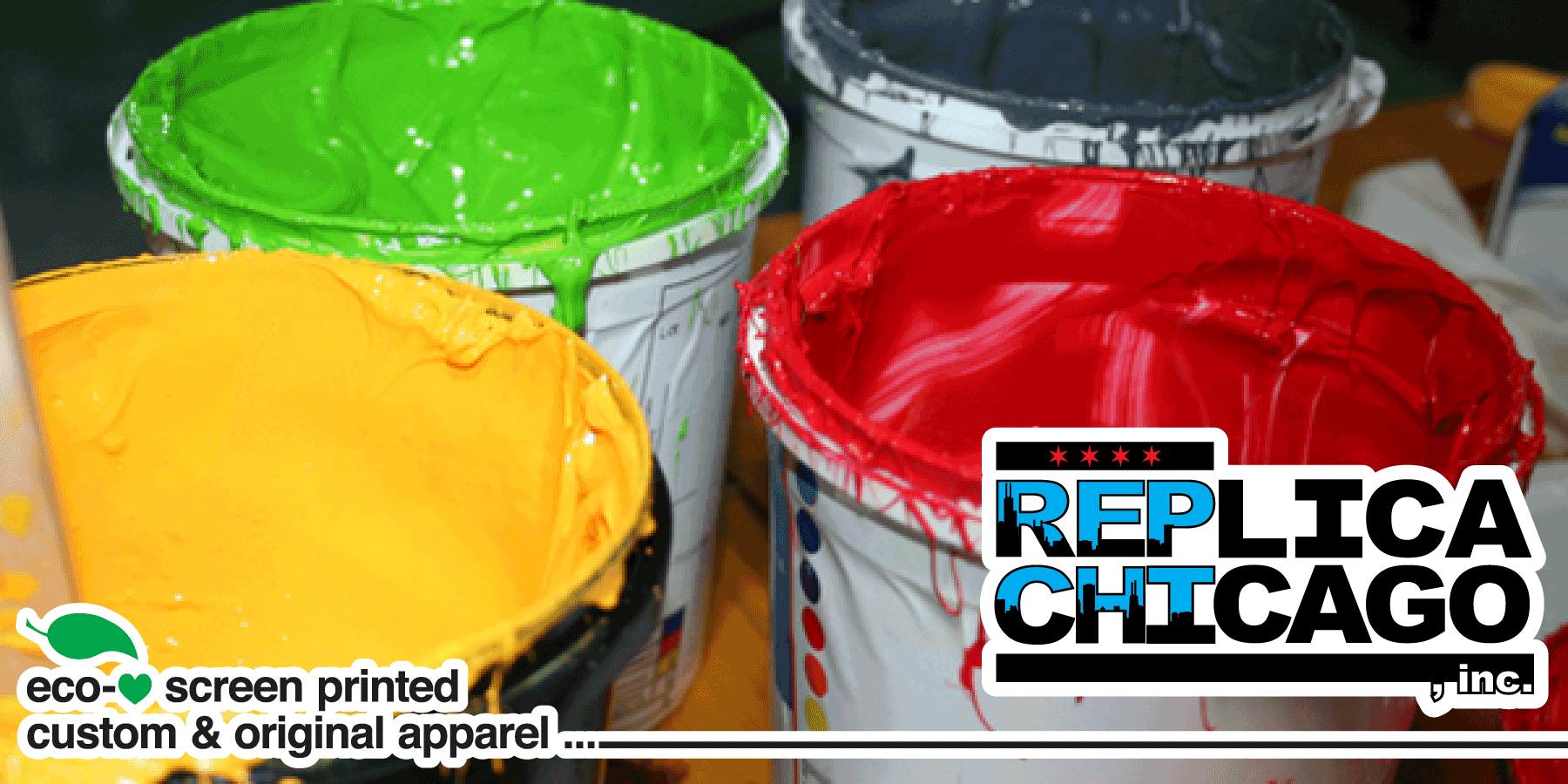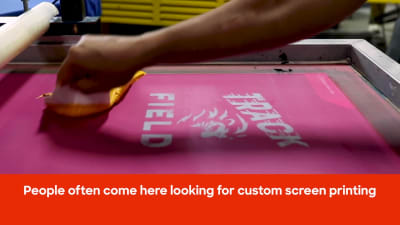Display Printing Uncovered: Everything You Need to Understand About T-Shirt and Garment Printing Methods
Display printing is a fascinating approach that incorporates art with method, providing limitless possibilities for creativity. All set to explore the necessary aspects that make screen publishing an art kind?
The Basics of Display Printing: Exactly How It Works
When you dive right into display printing, you'll discover it's both a science and an art. At its core, display printing includes creating a pattern, or screen, that allows ink to pass via only in certain areas.
Setting the display over the fabric, then make use of a squeegee to push ink via the screen onto the garment. Each step is crucial, and grasping them will certainly elevate your screen printing skills, changing easy garments into one-of-a-kind, expressive pieces.
Sorts Of Screen Printing Methods
As soon as you grasp the fundamentals of display printing, it's time to discover the numerous techniques that can raise your designs. One popular approach is traditional screen printing, where ink is pressed via a stenciled screen. This technique is great for strong, vibrant colors. Then there's water-based ink printing, which provides a softer feel and is eco-friendly, but it needs a different approach to treating.
If you're intending for great details, take into consideration discharge printing. This strategy gets rid of color from the material, leaving a soft, vintage look. An additional option is plastisol printing, known for its toughness and brilliant colors, making it a favorite for lots of brands. Finally, trying out halftone printing to produce gradient impacts and elaborate designs. Each method has its distinct appeal, so do not think twice to try them out to locate what matches your design best!
Important Devices for Screen Printing
To attain spectacular outcomes in display printing, having the best tools is fundamental. You'll need a strong display printing framework, which holds the mesh that transfers your design onto the garment. Next, buy high-grade mops; these are important for using ink equally throughout the screen. You'll also need an excellent exposure device to create your screens, along with a washout booth for cleansing them after use. A dependable warmth source, like a conveyor clothes dryer or warmth press, is vital for healing your prints to assure durability. Do not forget a proper office, equipped with tables and storage space for your products. Finally, protective gear, such as handwear covers and masks, will certainly maintain you safe from chemicals and inks. With the right devices, you'll be well on your means to generating professional-quality prints.
Picking the Right Inks and Products
When picking inks and materials for display printing, you require to think about the kind of ink that functions best for your project. Think about material compatibility to ensure your styles look excellent and last long. Also, explore green ink choices to make your printing procedure much more sustainable.
Sorts Of Screen Inks
Selecting the ideal screen ink is vital for achieving vivid, sturdy prints that satisfy your job's requirements. There are numerous kinds of display inks to analyze. Plastisol ink is popular for its convenience and convenience of use, giving superb color opacity on dark textiles. Water-based ink, on the other hand, supplies a softer feel and is environmentally friendly, making it optimal for those wanting to decrease their environmental impact. Discharge inks eliminate color from the material, leading to a soft, vintage appearance however require certain handling. Specialized inks, such as glow-in-the-dark or metal, can add special effects to your designs. Examine your project demands and pick the ink that aligns finest with your wanted end result.

Material Compatibility Factors To Consider
Understanding textile compatibility is important for achieving top quality screen prints, especially since various materials react distinctively to various inks. Always test your inks on example fabric to assure they stick effectively and maintain shade integrity. Furthermore, maintain in mind that textile weight and texture can influence the last end result, so choosing the appropriate ink and material combination is crucial for your task's success.
Eco-Friendly Ink Options
Eco-friendly inks are ending up being a popular selection for display printers who intend to reduce their environmental impact while preserving quality. When picking inks, consider water-based inks, which are less damaging and less complicated to cleanse up compared to traditional solvents. These inks bond well with textiles, delivering vibrant results without toxic chemicals. You might also discover eco-solvent inks that use less unpredictable organic substances (VOCs), making them a much safer choice for both your wellness and the planet.
In addition, try to find inks made from renewable energies, such as soy or vegetable-based options. By picking the ideal inks and products, you'll not just produce spectacular layouts yet also add to an extra sustainable printing process. Make the switch, and your prints will certainly reflect your commitment to the atmosphere!
Preparing Your Layout for Screen Printing

File Style Demands
To ensure your layout looks sharp and vibrant on fabric, you'll require to pay close focus to submit format demands for display printing. Make certain your layout has a transparent background to stop unwanted white edges on your prints. Maintain color modes in mind; CMYK is common for screen printing, so transform your RGB designs as necessary.
Color Splitting Up Methods
Color splitting up is a vital action in preparing your style for screen printing, and grasping it can substantially boost your print top quality. You'll require to break your layout into individual shades, as each color calls for a separate display during printing. Start by determining all the colors in your layout and develop layers each. You can use software program like Adobe Photoshop or Illustrator to isolate and separate shades properly. Be particular to save each layer as a separate documents, commonly in a style like TIFF or PSD. This accuracy not just assures accurate shade representation but also simplifies the printing process. By taking note of shade splitting up, you'll attain specialist and vivid cause your screen-printed garments.
Resolution and Dimension
Attaining the best results in display printing begins with guaranteeing your design has the ideal resolution and size. Preferably, your art work needs to be at the very least 300 DPI (dots per inch) for sharp, clear prints. helpful resources If you use reduced resolution, your end product could look pixelated and less than professional.
When it involves size, consider the dimensions of your print location. Layout your art work to match the last print size, ideally producing it in the real measurements you'll be publishing. In this manner, you'll prevent any kind of unforeseen scaling concerns.
Constantly inspect your layout in both vector and raster styles. Vector graphics can be scaled without losing top quality, making them excellent for screen printing. Preparing correctly will ensure your layout looks amazing on every garment!
Step-by-Step Screen Printing Process
Screen printing is a dynamic procedure that permits you to develop lively styles on different surfaces. To obtain started, you'll need a screen, solution, and your picked ink.
After cleaning out the unexposed emulsion, your display prepares. Set it up on your printing surface area and straighten your garment underneath it. Put ink onto look what i found the display and utilize a squeegee to press the ink via the pattern onto the material. Lift the screen carefully and let the print completely dry. Treat the ink utilizing heat to ensure sturdiness. That's it! You've successfully screen published your style.
Tips for Effective Display Printing Projects
While you're diving right into your screen printing jobs, keep in mind that prep work is crucial to success. Start by collecting all your materials-- inks, mops, garments, and screens. A tidy office assists avoid undesirable errors, so clean up prior to you start.
Next, verify your artwork is high-resolution and correctly sized for your garment. Test your display for proper direct exposure and tidy it extensively to prevent smudges. When blending your inks, adhere to the producer's standards to achieve the appropriate consistency.
Throughout printing, apply also stress with your squeegee for consistent outcomes. Do not rush; take your time to validate each print meets your requirements. After printing, allow your garments completely dry totally before dealing with or packaging them.
Lastly, always keep an example of your help future referral. This method, you can examine your progression and boost your techniques gradually. Pleased printing!

Regularly Asked Concerns
Exactly how Lengthy Does It Require To Establish a Screen Printing Job?
Establishing a screen printing job generally takes about 30 minutes to an hour. You'll prepare the screens, mix inks, and change the press. The time differs based upon intricacy and experience, so remain arranged!
Can I Print on Different Textile Keys In Using the Same Strategy?
Yes, you can publish on various textile kinds using the very same method, however you'll need to adjust your inks and settings. Some textiles take in ink in a different way, so experimenting guarantees the most effective outcomes for every material.
What Are Usual Blunders to Stay Clear Of in Screen Printing?
When display printing, prevent common blunders like making use of the incorrect ink, ignoring proper direct exposure times, or avoiding pre-press checks. Constantly check your setup and keep tidy screens to guarantee high quality outcomes each time.
Just How Can I Appropriately Clean and Keep My Screen Printing Devices?
To appropriately clean and keep your screen printing tools, you must regularly clean screens with appropriate solvents, examine squeegees for wear, and assure all tools are kept completely dry and dust-free. Consistency enhances and prevents costly fixings efficiency.
Is Display Printing Eco-friendly Compared to Various Other Approaches?
Display printing can be a lot more eco friendly than other approaches, especially if you use eco-conscious materials and water-based inks. By choosing sustainable materials and techniques, you decrease waste and reduce your effect on the world.
Display Printing Uncovered: Every Little Thing You Required to Know Concerning Tee and Garment Printing Techniques
At its core, display printing entails developing a pattern, or screen, that permits ink to pass over here via only in certain locations. Placement the display over the fabric, then utilize a squeegee to press ink via the screen onto the garment. One preferred approach is traditional screen printing, where ink is pushed with a stenciled screen.When choosing inks and materials for screen printing, you need to take into account the kind of ink that works finest for your job.